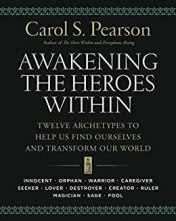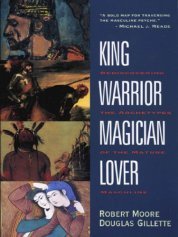Archetypal Character Arcs, Pt. 19: The Flat Archetype of the Ruler
 The Ruler represents the Flat or “resting” archetype that bridges the Queen’s rise to power and the King’s eventual surrender of that same power. As such, the Ruler represents the potential period in a person’s life in which he or she is in a position of leadership.
The Ruler represents the Flat or “resting” archetype that bridges the Queen’s rise to power and the King’s eventual surrender of that same power. As such, the Ruler represents the potential period in a person’s life in which he or she is in a position of leadership.
This Ruler might be a literal head of state—Queen, King, President, Prime Minister, etc. Or the Ruler might be a CEO, general, admiral, lead scientist, patriarch or matriarch, captain of a small fishing boat, etc. What is important to this archetype (and what distinguishes it from the previous Flat archetype of Parent) is that the Ruler is not just “in charge” but is the undisputed authority within his or her sphere of influence.
The Ruler is not merely the loving guide represented by the Parent (although in a healthy character, the Parent will of course have been incorporated into this more advanced archetype), but rather someone who has learned the hard lessons of the Queen’s rise to power. Namely, the Ruler understands that the primary challenge of true leadership is that of Order. A good Ruler will understand mercy, but will err toward justice. And as a result, the Kingdom runs smoothly and successfully (at least until the dawn of the subsequent King Arc signals it is time for the Crown to be passed on).
From a causal perspective within the “real world,” the Ruler is one of the most powerful of all archetypes. Perhaps literally or perhaps symbolically within the sphere of any specific story’s smaller “Kingdom,” the Ruler’s word is law. The decisions made by such a character have vast reach and will affect the lives of all characters living within the Kingdom (the “younger” and, likely, the “older” archetypes as well). Right away, we can see what a powerful protagonist the Ruler makes within a Flat Arcc—in which the protagonist will not change but will instead enact and offer change to the supporting characters.
The Ruler Archetype: True SovereigntyPrevious Arc: Queen
Subsequent Positive Arc: Crone
Subsequent Possible Negative Archetypes: Hermit (passive); Wicked Witch (aggressive)
The Ruler represents the height of a person’s power potential. This archetype rests at the very center of the entire life cycle. It is the Midpoint between the Second-Act arcs of Queen and King. As such, the Ruler is a character who has long since overcome the primary challenges of mastering the inner world (challenges which were conquered in the young Maiden and Hero Arcs), but has also (thanks to the Queen Arc) gained a significant amount of control over the outer world. Indeed, it is because of the Ruler’s inner-world control that he or she is able to bring similar order and blessing to the Kingdom.

Awakening the Heroes Within by Carol S. Pearson (affiliate link)
The Ruler is able to master the Kingdom precisely because he or she has first mastered Self. We can see this validated if we return to the symbolism of the classical Hero’s Journey, in which the young Hero is often called on his Quest because the King/Ruler is sick—and, as a result, the entire Kingdom has fallen under a blight. In short: healthy Ruler, healthy Kingdom. Carol S. Pearson talks about this in Awakening the Heroes Within:
The Ruler creates a peaceful and harmonious kingdom by becoming peaceful and harmonious inside. The belief system—that inner and outer worlds mirror one another—that informs alchemy is also encoded in the grail myths, especially with regard to the King’s relationship to the kingdom.
A Ruler who can bless the Kingdom with this kind of health is someone who has achieved true sovereignty. We symbolically view this character as “the King” or “the Sovereign” precisely for this reason. A worthy leader is a person who has first mastered or gained sovereignty over themselves. Indeed, the hallmark of a negative Ruler—the Puppet (passive) or the Tyrant (aggressive)—is disrespect for either one’s own personal sovereignty or that of others.
The Ruler’s Normal WorldNot surprisingly, the Ruler’s Normal World may be viewed symbolically as a Kingdom. It is not necessary for the character to literally rule over a nation. Whatever his or her realm of influence, that is the story’s Kingdom. As Pearson says:
…the Ruler is the archetype of material prosperity.
This does not mean the protagonist needs to be wealthy or even to have a great number of “subjects.” What it does mean is that the Ruler has reached the top of the ladder in whatever his sphere of influence—and he’s happy there. If his Kingdom is Jeff Bridges’s floating school for troubled boys in White Squall, then he is content to rule that Kingdom. He is not ambitious. Although he will always be trying to better the lot of his subjects, he is not trying to advance his own position because, archetypally, he is already at the top.

(And, by the way, in case you were wondering, we can know the Jeff Bridges character is primarily a Ruler archetype instead of a Parent archetype because his focus is not on Loving the boys in his charge but rather on helping them become responsible citizens by imposing Order upon them. He’s not protecting them as Children, but demanding they carry their weight as “citizens” within their little floating Kingdom.)
The Kingdom will be a self-contained unit with defined borders. Rulers are not the rulers of everything (unless, of course, they are). Rather, they are finite sovereigns of finite realms with finite borders—and they will recognize and make treaties with other Rulers of other realms.
Whatever the story’s specific Kingdom, it will be a space in which the Ruler can work to effectively impose order and productivity. To whatever degree possible, the Ruler will work to better the lot of the Kingdom’s subjects and keep the system running smoothly.
The Ruler’s Relationship to the Thematic TruthThe Ruler is a very advanced archetype—one that only a few people truly embody, even when they have reached the proper chronological age (although, of course, a Ruler can be represented by chronologically younger characters as well). By this point in the life cycle, the Ruler has successfully learned and integrated many Truths—most recently the Queen Arc’s “Only wise leadership and trust in those I love can protect them and allow us all to grow.” But the very fact that this character is a Ruler—and presumably a pretty good one—means there are many thematic Truths available to be handed down to the Kingdom.

King, Warrior, Magician, Lover by Robert Moore and Douglas Gillette (affiliate link)
In King, Warrior, Magician, Lover, Robert Moore and Douglas Gillette talk about the Ruler’s potentially vast range of influence as the “central archetype”:
Like the Divine Child, the good King is at the Center of the World. He sits on his throne on the central mountain, or on the Primeval Hill, as the ancient Egyptians called it. And from this central place, all of creation radiates in geometrical form out to the very frontiers of the realm. “World” is defined as that part of reality that is organized and ordered by the King. What is outside the boundaries of his influence is noncreation, chaos, the demonic, and nonworld.
This is a character who is not just brave, smart, and caring, but a character who has integrated all the previous arcs’ lessons into a profound wisdom. Even when the Ruler makes mistakes, this is still a character who has much to offer everyone else—if they are willing to accept.
How the Ruler Creates Change in Supporting CharactersA good Ruler is most likely to interact with the younger Heroes, initiating them on their Quests into adulthood. As with all the “older” archetypes, the Ruler here offers a vital transaction within the life-arc cycle. This transaction represents the ability of all the more mature archetypes to help initiate younger archetypes in their own journeys. As Gillette and Moore point out:
Young men today are starving for blessing from older men, starving for blessing from the King energy. This is why they cannot, as we say, “get it together.” They shouldn’t have to. They need to be blessed. They need to be seen by the King, because if they are, something inside will come together for them. That is the effect of blessing; it heals and makes whole. That’s what happens when we are seen and valued and concretely rewarded (with gold, perhaps, dropped from the pharaoh’s hand) for our legitimate talents and abilities.
A good Ruler may also work to transform an upcoming Queen. This might seem surprising at first glance, since the Queen Arc is usually about supplanting a previously unworthy King. But in reality, the Queen’s transition into leadership need not be so dramatic. If she happens to be fortunate to be successor to a good Ruler, that Ruler will not stand in the way of her rise. When it is time for him to take his own King Arc and step down from the throne, he will pass on the Crown to a worthy successor who he has himself blessed and trained up.
Types of Stories That Feature a Ruler ProtagonistCertain stories about teachers are often Ruler stories (again, those that focus more on healthy Order and maturing their students into adulthood, rather than nurturing the students’ Child capacities). War stories that focus on the burden of command can be seen to feature Rulers (such as Band of Brothers and the Captain America stories in the MCU).

And, of course, Ruler characters are often just that—rulers of countries, kingdoms, villages, galaxies, etc. Flat-Arc stories about monarchs and presidents are almost always stories about Rulers (unless, of course, they are stories about Puppets or Tyrants).
Usually, a Ruler story will feature strong subplots about the arcs of the younger characters who are influenced by the Ruler protagonist. But if the story is truly a Flat Arc featuring a Ruler protagonist (versus a Change-Arc in which the protagonist is a younger archetype and the Ruler is instead a supporting Impact Character), the Ruler will be presented as the character with the most agency at all of the important structural beats.
Examples of the Ruler:Examples of the Ruler archetype include the following. Click on the links for structural analyses.
Mr. Knightley in EmmaLeia Organa in Star WarsJack Aubrey in the Aubrey/Maturin seriesSteve Rogers in the MCUFuriosa in Mad Max: Fury RoadSkipper Sheldon in White SquallDick Winters in Band of BrothersSister Julienne in Call the MidwifeStay Tuned: Next week, we will study the Flat archetype of the Elder.
Related Posts:
Story Theory and the Quest for MeaningAn Introduction to Archetypal StoriesArchetypal Character Arcs: A New SeriesThe Maiden ArcThe Hero ArcThe Queen ArcThe King ArcThe Crone ArcThe Mage ArcIntroduction to the 12 Negative ArchetypesThe Maiden’s Shadow ArchetypesThe Hero’s Shadow ArchetypesThe Queen’s Shadow ArchetypesThe King’s Shadow ArchetypesThe Crone’s Shadow ArchetypesThe Mage’s Shadow ArchetypesIntroduction the 6 Flat ArchetypesThe ChildThe LoverThe ParentWordplayers, tell me your opinions! Can you think of any further examples of stories that feature the Ruler? Tell me in the comments!Click the “Play” button to Listen to Audio Version (or subscribe to the Helping Writers Become Authors podcast in Apple Podcast or Amazon Music).
___
Love Helping Writers Become Authors? You can now become a patron. (Huge thanks to those of you who are already part of my Patreon family!)The post Archetypal Character Arcs, Pt. 19: The Flat Archetype of the Ruler appeared first on Helping Writers Become Authors.




